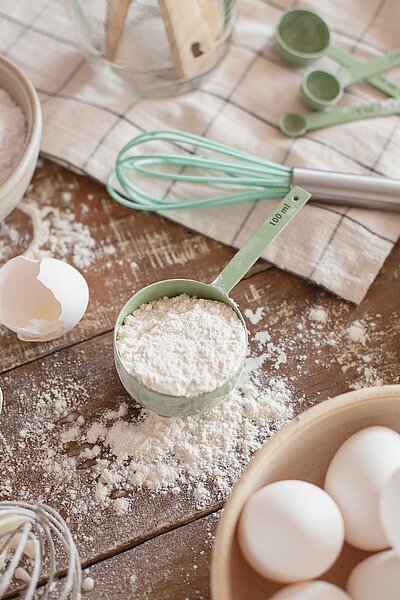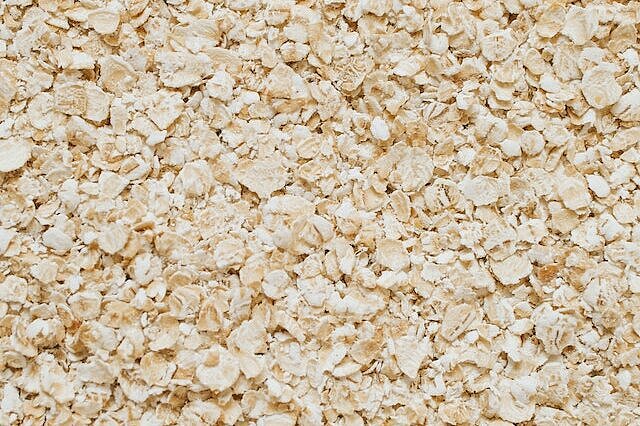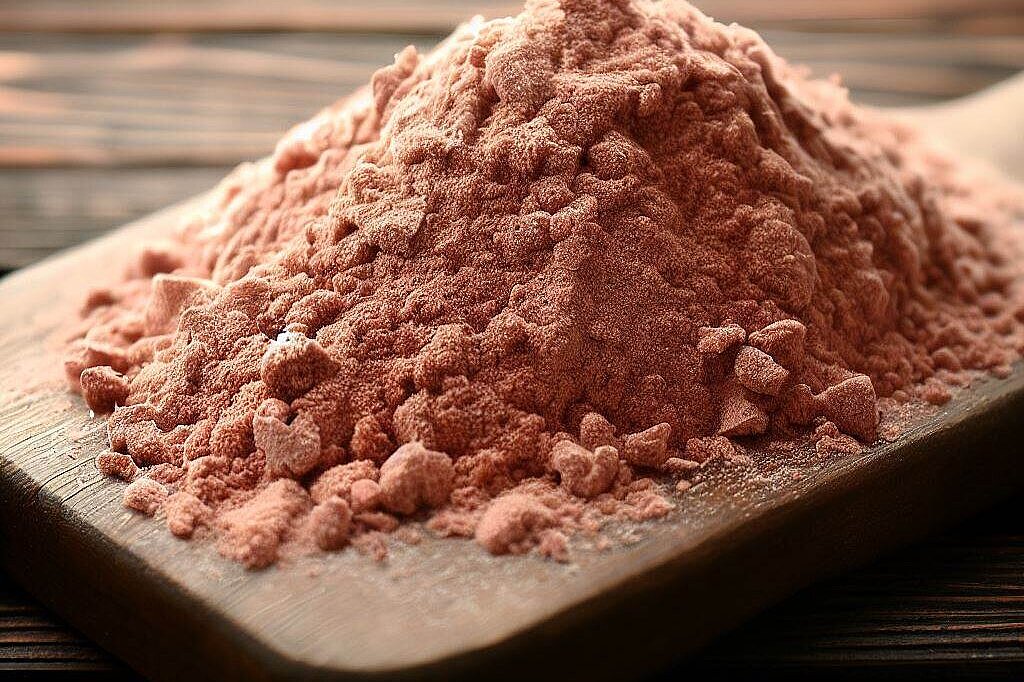Flour

What is flour and how is it made?
Flour is a product of the crushing and grinding of plant-based raw materials. The most common types of flour are wheat flour, rye flour, spelt flour and oat flour. However, there are also gluten-free flours made from corn, rice, buckwheat or almonds. Depending on how finely the flour is ground, a distinction is made between different types, which indicate the mineral content. For example, type 405 wheat flour has a lower mineral content than type 1050 wheat flour.
Flour is produced in several stages. First, the grains are cleaned to remove impurities such as stones, dust or weed seeds. Then they are hulled to remove the outer layer, which usually contains fiber and vitamins. The grains are then crushed and ground until a fine powder is obtained. The flour is then sieved to achieve the desired grain size.
What are the benefits of flour for dogs?
Flour can have several benefits for dogs when fed in moderation. For one thing, flour can be a good source of carbohydrates, providing energy and aiding digestion. Secondly, meal can also contain proteins and minerals that are important for building muscle and bone. In addition, flour can help to avoid allergies or intolerances to other ingredients if you use gluten-free flours.
Flour can also be used to bake homemade treats for dogs. You can try out creative recipes that are tailored to your dog's needs and preferences. For example, you can mix flour with bananas, peanut butter, carrots or cheese and shape them into small cookies. These can then be baked in the oven or dried.
What are the disadvantages of flour for dogs?
However, flour also has some disadvantages for dogs that you should be aware of. Firstly, flour can lead to obesity if it is fed in excessive quantities. Flour often has a high glycemic index, which means that it causes blood sugar levels to rise and fall quickly. This can lead to food cravings and obesity. On the other hand, flour can also lead to health problems if the dog has an allergy or intolerance to a certain type of flour. This can manifest itself in skin rashes, itching, diarrhea or vomiting.
Flour can also affect the quality of the dog food if it is used as a filler. Some manufacturers of industrially produced dog food use flour as a cheap substitute for meat or vegetables. This can result in the food containing fewer nutrients and being less palatable.
Flour is an ingredient that can have both advantages and disadvantages for dogs. It depends on which type of flour you choose, how much you feed and how you prepare it. As a general rule, flour should only be used as a supplement to dog food and not as the main ingredient. If you want to bake treats for your dog yourself, you should pay attention to the quality and quantity of the flour and use natural and healthy ingredients wherever possible. If you buy ready-made dog food, you should pay attention to the ingredients and avoid flour as a filler. This way you can ensure that your dog gets a balanced and varied diet that is good for him.
Properties 3
Are you looking for other ingredients with a specific property?
Just click on them to find more.
If you notice any signs of hypersensitivity or poisoning in your dog, you should see your vet immediately. We are not a substitute for a vet, but we try to be as accurate as possible. Every dog reacts differently and we recommend you get a second opinion or consult your vet if in doubt.
Stay healthy and take good care of your four-legged friend!😊
Similar to Flour
Blood meal is a by-product of animal slaughter and consists of dried and ground blood. It is often used as a source of protein in animal feed as it contains a high proportion of amino acids and...
Oatmeal has several benefits for dogs that make it a good choice for breakfast or as an ingredient in homemade dog treats. Here are some of them: Oatmeal is gluten-free and is therefore well...
Wheat flour is a finely ground powder obtained from the grain of the wheat plant. Wheat is a cereal that belongs to the sweet grass family and is cultivated worldwide. There are different types of...
Meat meal is an animal by-product obtained from slaughterhouse waste such as bones, tendons, cartilage, skin, feathers or fur. These are chopped up, cooked, degreased and dried until they are...



